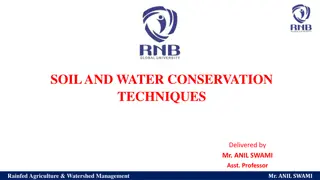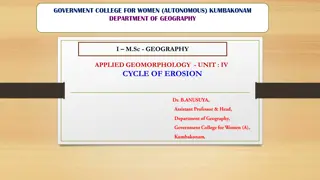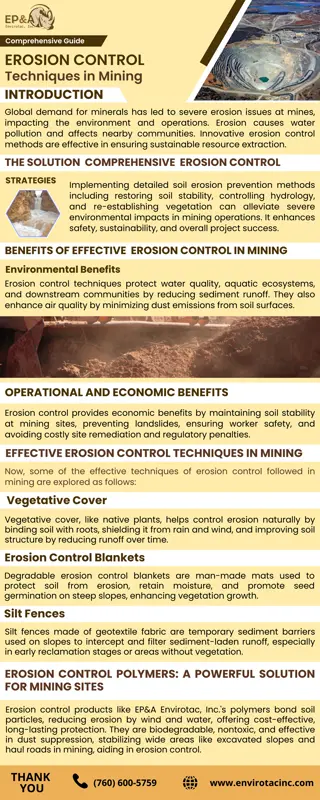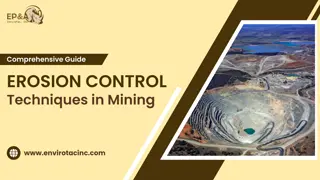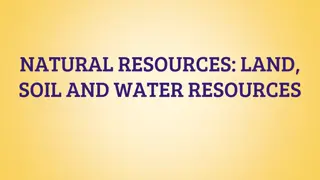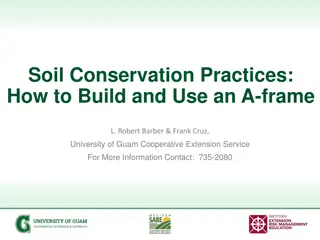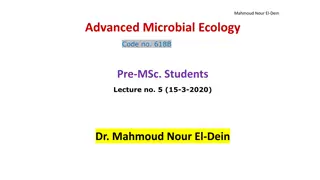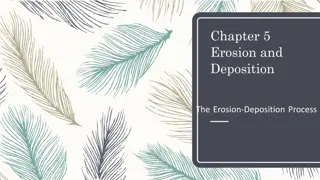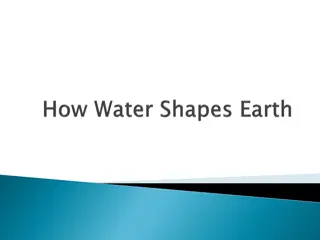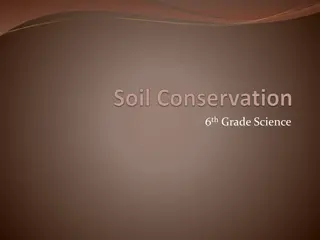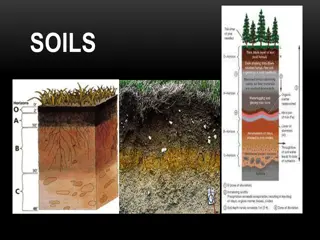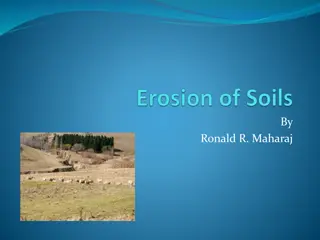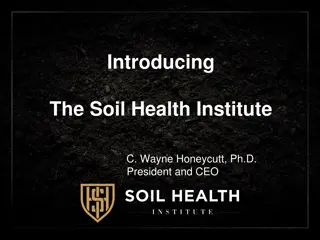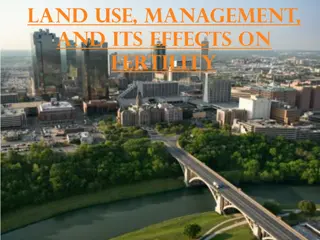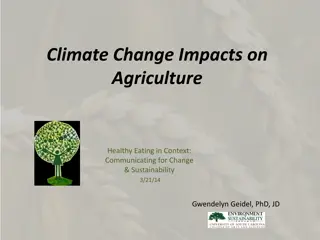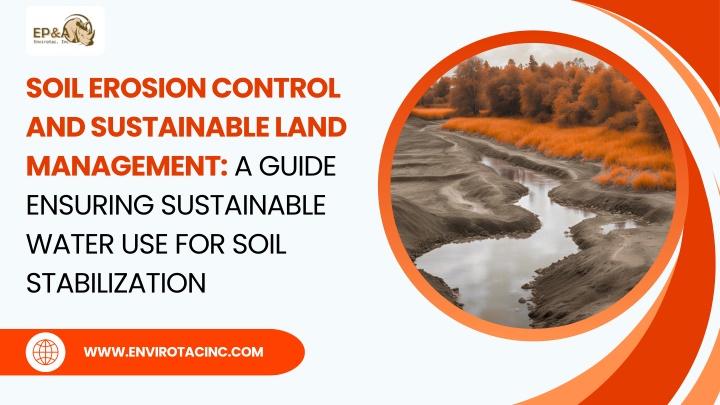
Soil Erosion Control and Sustainable Land Management:
Soil erosion control and sustainable land management are crucial for preserving soil health and water resources, using stabilization and dust control for environmental protection.n
Download Presentation

Please find below an Image/Link to download the presentation.
The content on the website is provided AS IS for your information and personal use only. It may not be sold, licensed, or shared on other websites without obtaining consent from the author. If you encounter any issues during the download, it is possible that the publisher has removed the file from their server.
You are allowed to download the files provided on this website for personal or commercial use, subject to the condition that they are used lawfully. All files are the property of their respective owners.
The content on the website is provided AS IS for your information and personal use only. It may not be sold, licensed, or shared on other websites without obtaining consent from the author.
E N D
Presentation Transcript
SOIL EROSION CONTROL AND SUSTAINABLE LAND MANAGEMENT: A GUIDE ENSURING SUSTAINABLE WATER USE FOR SOIL STABILIZATION WWW.ENVIROTACINC.COM
INTRODUCTION You may not know this: Approximately 24 billion tons of soil are lost annually to erosion, highlighting the urgent need for soil stabilization and dust control products to ensure sustainable land management and environmental preservation.
UNDERSTANDING SOIL EROSION AND ITS IMPACT Soil erosion, accelerated by human activities, removes fertile topsoil, reducing agricultural productivity, polluting water, and contributing to climate change by releasing stored carbon into the atmosphere.
THE ROLE OF SOIL STABILIZATION IN EROSION CONTROL Soil stabilization improves soil's shear strength and erosion resistance through mechanical, chemical, or biological alterations, ensuring land sustainability and effective erosion control. MECHANICAL STABILIZATION Mechanical stabilization involves compaction or adding reinforcement materials like geotextiles to increase soil density and reduce erosion.
CHEMICAL STABILIZATION Mixing soil with chemical additives like lime, cement, or polymers enhances cohesion, reduces erosion, and increases load-bearing capacity, making it valuable for construction and agricultural applications. BIOLOGICAL STABILIZATION Vegetation stabilization uses plant roots to bond soil particles, preventing erosion, while the plants shield the soil from direct impact by rain or wind.
SUSTAINABLE WATER USE IN SOIL STABILIZATION Sustainable water use in soil stabilization involves optimizing water intake to prevent waste, depletion, and pollution, ensuring environmental protection throughout the stabilization process.
KEY PRACTICES FOR SUSTAINABLE WATER USE EFFICIENT IRRIGATION: For land and agricultural management, an efficient irrigation method is a drip system, delivering water directly to plant root zones with minimal water loss. RAINWATER HARVESTING Collecting and storing rainwater reduces pressure on groundwater and surface water sources, aiding in sustainable water management and stabilizing soil. RECYCLING AND REUSE It is possible to recycle and reuse water in soil stabilization in construction to reduce water footprint. MONITORING AND MANAGEMENT Monitoring water use and soil moisture helps optimize water application, stabilizing soil and conserving water.
INTEGRATING SOIL STABILIZATION WITH DUST CONTROL Dust control, especially for wind erosion, involves using products like soil binders and suppressants on exposed surfaces. These enhance particle cohesion, reducing dust generation and preventing particles from becoming airborne.
SOIL BINDERS: Liquid products create a soil crust to prevent erosion by binding soil particles together. SUPPRESSANTS: Chemicals sprayed on soil to prevent dust, commonly used in construction, unmetalled roads, and dry soil areas. Using dust control products with soil stabilizers enhances erosion control by preventing wind erosion on mechanically stabilized soil surfaces.
THE BENEFITS OF SOIL EROSION CONTROL AND SUSTAINABLE LAND MANAGEMENT Effective soil erosion control ensures environmental health and economic savings. PRESERVATION OF SOIL HEALTH Erosion control prevents loss of nutrient- rich topsoil, vital for soil fertility, agricultural productivity, and ecosystem health.
WATER CONSERVATION REDUCED ENVIRONMENTAL POLLUTION Sustainable water practices stabilize soil by conserving water resources and preventing erosion caused by excessive runoff. By controlling soil, erosion, dust, sediments, and pollutants, water quality improves, protecting water bodies. CLIMATE CHANGE MITIGATION Healthy, stabilized soils can sequester carbon by storing it, thereby limiting its release as a greenhouse gas.
CONCLUSION Soil erosion control and sustainable land management protect the environment and future productivity. Integrating soil stabilization, sustainable water use, and dust control enhances landscape resilience and preserves resources for future generations.
THANK YOU FOR YOUR ATTENTION (760) 600-5759 www.envirotacinc.com


